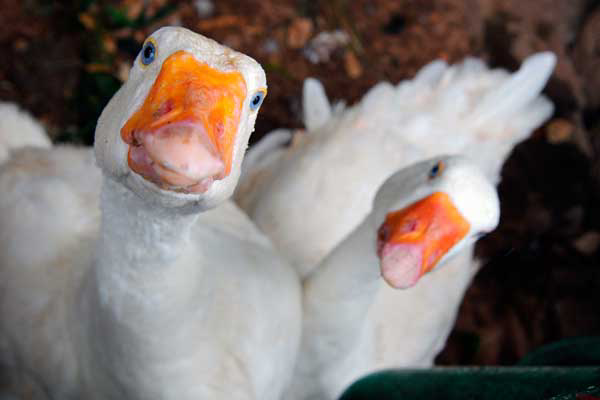Artificial insemination in white geese lowers fertility

At present, the free-range model of raising geese is gradually transforming into barn feeding in China. The technique of artificial insemination will be applied more widely with the upcoming changes of goose raising models.
The effects of the raising model on semen quality of male Sichuan white geese were investigated in a trial. Forty male Sichuan white geese (at 210 days of age) were randomly allocated into 10 cages and 10 floor pens. The cage or pen served as a replicate unit (with a total of 10 replicates per raising model and 2 geese per replicate). A total of 200 females Sichuan white geese (at 210 d of age) were randomly allocated to 20 floor pens (10 females per pen). Semen was collected from the males at 270 to 285 days of age and artificially inseminated into females.
The eggs from females inseminated were collected from day 273 to 282 of age. The results of analysed data showed that raising male geese in cages lowered semen volume (0.441 and 0.375 ml, respectively) sperm concentration (4.78 and 3.21 × 108/ml, respectively) and sperm motility (80.4 and 68.1%, respectively). Raising the males in the cages also lowered the pH of semen (7.14 and 6.74, respectively). The fertilisation rate and hatchability of fertile eggs from females inseminated with semen from males raised in cages were reduced (89.5 and 85.3%, respectively / 91.2 and 89.3%, respectively). In conclusion, the raising model of male geese may lower semen quality and subsequent fertility to the eggs. In order to maintain similar fertilization rate and hatchability when applying artificially insemination to female geese, a higher volume of semen may be required from male geese raised in cages than those raised in floor pens.
[Source: Abstracts of the 2014 International Poultry Scientific Forum, Atlanta, GA USA
Anfang Liu, Mingjun Chen, Jing Zhang, Wang Xi, Jie Liu, Xia Qiu and Hongpeng Ma, Southwest University, Chongqing, China
Wei Zhai, Mississippi State University, Starkville, MS USA]













